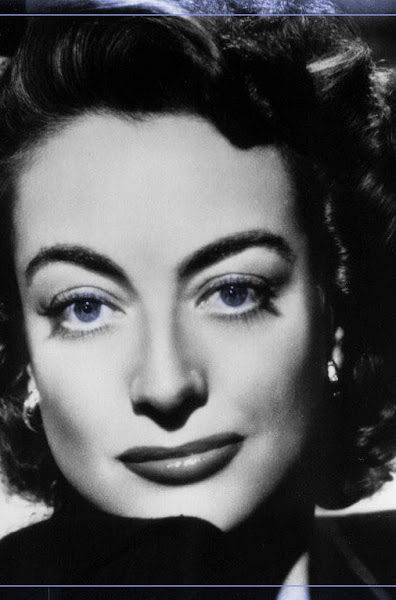
In his discussion of “Vertigo” with celebrated film critic and director Francois Truffaut, Alfred Hitchcock says of Jimmy Stewart’s character, Scottie: “To put it plainly, the man wants to go to bed with a woman [Madeleine] who’s dead; he is indulging in a form of necrophilia.” It is rare in film that someone has the accusation of necrophiliac levied against him, so I want to unpack this weighty statement. Have no fear—queer theory is here! (I took a brief look into queer theory last summer, but I have been unable to pursue it again until now. If you re-read that random musing from a year ago, you will see huge differences from between then and now in terms of how I study queerness and film. There, it was more about gay representation, and here, it is more theoretical.)
To put it simply and to offer a good working definition (because the concept can be difficult to grasp—trust me), queer theory is the study of all things non-heteronormative in film, meaning all kinds of sexualities and gender identities (not heterosexual), specifically those that resist definition. However, because of the non-heteronormative status of “queerness,” “label-able,” “unconventional” sexuality (or gender) identifications such as homosexuality, pansexuality, and paraphilia also fall under the category of “queer.” Necrophilia, the desire to have sex with corpses, which Hitchcock accuses Scottie of possessing, is technically paraphilia, defined by Wikipedia as “powerful and persistent sexual interest other than in copulatory or precopulatory behavior with phenotypically normal, consenting adult human partners.” Necrophilia could, then, also be termed a form of “deviant sexual behavior” since, in Freudian terms, it is also technically “perversion,” meaning it never results in propagation (although almost everyone in the world is technically “perverted,” since a good deal of sexual behavior is engaged in specifically for the pleasure, not for the procreation; however, here, I want to address “necrophilia” specifically as a form of Freudian “perversion” and general “deviancy” from standard, living human sexual partners).
In any case, to summarize the plot of “Vertigo,” detective Scottie “gets” his necrophilia after having fallen in love with “Madeleine Elster,” the woman that he is supposed to be following, and having suffered a horrible nervous breakdown after watching her fall to her death. When he finds Judy on the street and notices her uncanny resemblance to his “dead” love, he decides to reshape her into his object of desire: Madeleine.
With this point of departure, we can now interpret how “maniacal” (in the words of Hitchcock) Scottie becomes about this transformation. He wants so badly to recreate Madeleine that he essentially reconstructs Judy’s body—hair, face, clothes, and all—in order to get back his object of desire. In essence, the reconstruction of Judy’s body into Madeleine’s body recreates the appearance of a woman now dead and whose body should have long since begun decomposing. Thus, Scottie’s desire for Madeleine is so strong that his heterosexual impulse has transformed into a paraphilic desire for her dead body—into necrophilia.
He is finally able to act upon his new “queer” sexual desires when Judy finally completes her transformation into Madeleine. As she exits the bathroom in her small hotel room, Scottie “gets up” from his seated position. Essentially, he becomes immediately “aroused” at the sight of Judy as Madeleine. Judy is bathed in an eerie green light before she begins to cross the room. She has been officially reconstructed into Madeleine, the dead woman, and Scottie immediately embraces her and kisses her. As the camera rotates around them, Judy is basically limp in his arms—her body mimics the lifelessness of a corpse as Scottie continues to kiss her all over. Meanwhile, he looks around at his surroundings at one point to find himself in the midst of a fantasy. Because it is a fantasy, I think that it externalizes the sexual fantasies taking place in Scottie’s head. The setting is now the barn at San Juan Batista, the last place Scottie kissed “Madeleine” before she “died.” His fantasy returns the two to that nostalgic spot, but also transports them in front of a set of empty carriages, one of which they are standing before (the back seat, specifically) when Scottie starts to voraciously kiss Judy again. I would not put it past Hitchcock (always the perv) to have deliberately placed the back seat of the carriage in the rear projection directly behind Scottie and Judy at the moment of their return to kissing. This notable kissing scene, coupled with its sweeping music, seems to be the real moment of metaphorical sexual consummation for Scottie—he is taking the limp body in his arms and kissing her all the way to the back seat of a carriage. He is fantasizing making love to a corpse. End of story.
Therefore, I think Hitchcock makes a valid statement by deeming Scottie a necrophiliac. In fact, Scottie’s “queerness” could be argued in the way that queer theory supports the contention that sexuality can be a fluid thing (which is an argument that is far too lengthy to address here beyond noting it for our purposes)*. Although all of the film’s relationships are presented as heterosexual in the first part (meaning everything before the mental institution), the death of “Madeleine” brings about a change in the second part (meaning everything after) which leads to necrophilia in the film’s relationships, notably in the way Scottie interacts with the reconstructed Judy. Essentially, the second part of the film, in and of itself, is a “queer film.”
Now for the real question: Hitchcock thinks Scottie’s behavior in the second half of the film is quite obsessive and maniacal, so is it a by-product of a belief in the deviance of necrophilia as a sexual behavior? Hitchcock, though always famously interested in people of alternative sexualities, tends to endow said people as criminals, such as the “murderous gays.” Gay, maniacal, gay, maniacal… But paraphilic, maniacal, too?
* In addition, as specifically noted by Tania Modleski in her chapter on "Vertigo" (The Women Who Knew Too Much: Hitchcock and Feminist Theory), Scottie also has a “masculine bisexual identification” with Madeleine/Judy (in the sense that Freud’s women are essentially bisexual). Thus, Scottie’s “queerness” can also be identified in terms of a changing, fluid gender identity: a mix between masculine and feminine identification (Modleski notes the compositions with mirrors). However, I only want to address in this “random musing” the aspects of non-normative sexuality and “queerness.” Nevertheless, the argument of gender identity and “queerness” could also be applied to strengthen the argument of Scottie’s “queerness,” whose changing gender identity, if not begins, then becomes more significant, with the dream sequence.
May 11, 2009
Random Musing: (Queer) Vertigo
Labels:
queer theory,
random musings
Subscribe to:
Post Comments (Atom)

.jpg)

.jpg)
.jpg)

No comments:
Post a Comment